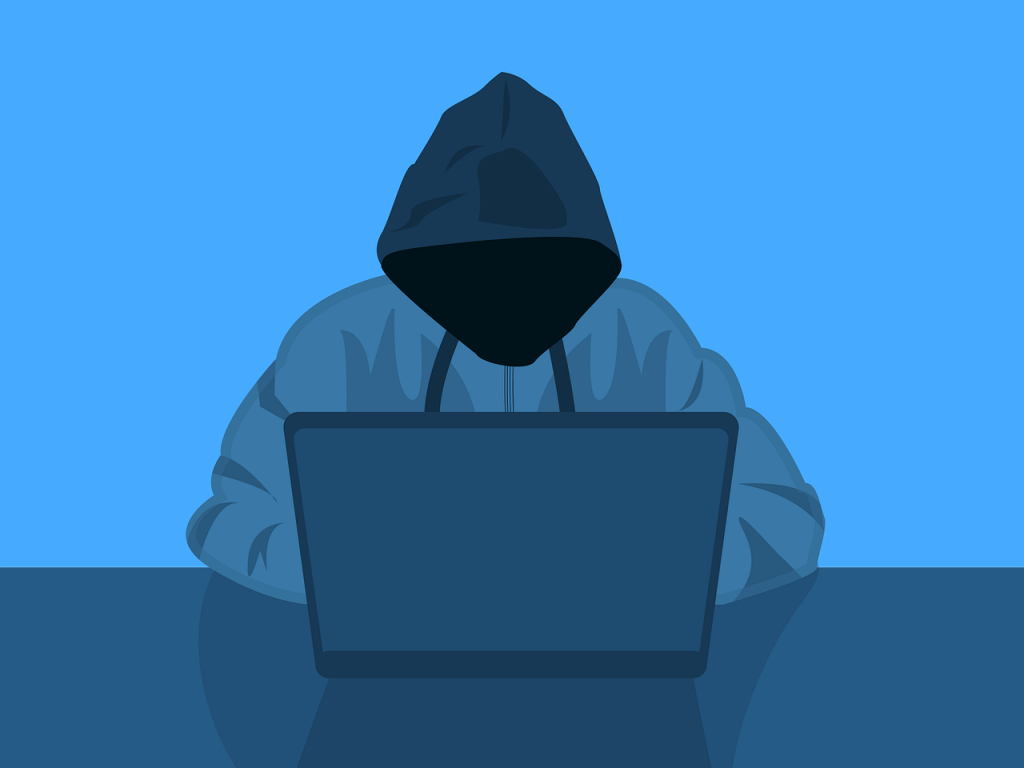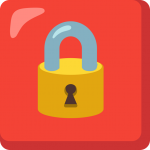
Everybody remembers the scramble to set up employees to work from home after COVID broke out in 2020. A bit of that remote workforce has returned to the office. Forbes reported in January that “Currently, 15.2% (24.4 million) of Americans work from home, marking a significant decline from the peak of 37% in early 2021.”
While the rise of remote work continues to redefine the modern workplace, the days of rigid office schedules and commutes have seriously deteriorated. With this flexibility comes a new set of challenges and threats. Remote work environments often introduce vulnerabilities to your organization's data and systems.
73% of executives believe that remote work increases security risk.
These risks can be mitigated with the right defensive strategies. Let’s look at the essential security practices for remote teams. You’ll learn how to keep company data safe and secure, no matter your location.
1) Home Network Security
Wi-Fi Encryption is a MUST!
Cyber crooks can grab data out of the air easier than they can from cables and wires, so make sure that your Wi-Fi is encrypted with the latest security protocols, such as WPA3. This is a foundational step in securing a home network. This prevents unauthorized users from accessing your network and intercepting data.
Do NOT Use Default Router Settings
Routers, like many devices, often come with default usernames and passwords - which are well-known to cyber criminals. Change these to unique, strong credentials. This helps prevent unauthorized access to your network.
2) Use Strong Passwords
This advice comes straight from the ‘DUH!’ file. The world’s most used password (123456) is also the most easily cracked (DUH!). For information on how to satisfy this defense requirement, please read our tips in 'Creating Strong Passwords' on this website.
Use a Password Manager
Everything with a login needs to have its own, unique password, so workers can end up with a lot of passwords to remember, which is a daunting task. Password managers can generate, store, and autofill complex passwords. This helps ensure that each account has a unique and strong password, and you only need to remember ONE – the password for the password manager.
Multi-Factor Authentication (MFA)
If you haven’t Installed MFA yet, what’s the holdup? It adds an extra layer of security, so even when a hacker compromises a password, MFA requires a second form of verification – commonly a code sent tour email or smartphone. This second step makes it much harder for attackers to breach accounts.
3) Protect Your Devices
Antivirus/Anti-Malware Software
Ensure that all devices used for work purposes have up-to-date anti-malware software installed and set them up for automated updates and security patches. These tools can detect and neutralize threats before they cause significant damage.
What Happens Without Updates?
Outdated software can have vulnerabilities that are exploited by cybercriminals. To stay protected against the latest threats, enable automatic updates for your:
Operating system
Applications
Security software
Encrypted Storage
Wherever you can encrypt data… DO IT! Especially use encrypted storage for sensitive data. This ensures that even if a device is lost or stolen, the data remains inaccessible to hackers – even if they can get it, they can’t read it. You can use both built-in options and third-party solutions.
4) Secure Your Communication Channels
VPNs (Virtual Private Networks)
VPNs are a lifesaver in many arenas – for a remote workforce, it encrypts your internet traffic. It also provides protection when using ‘Free’ public Wi-Fi (like at a Starbucks). This makes it difficult for attackers to intercept and access your data. Using a reputable VPN service is crucial. Especially when accessing company resources over public or unsecured networks.
Encrypt Your Messaging and Email
Like we said above, encrypt everything, especially communications in any form. These protect the content of your messages and emails and thwart many ‘phishing’ schemes. When choosing messaging and email services, ask about encryption. This can ensure that your communications remain private and secure.
5) Safe Browsing Policies & Procedures (P&P)
Browser Security
Always keep your web browser up-to-date and configured for security. This includes:
Enabling features such as pop-up blockers
Disabling third-party cookies
Using secure (HTTPS) connections whenever possible
Learn How to Avoid Phishing Attacks
The #1 form of cyber-attack continues to be phishing. Be vigilant about unsolicited emails or messages asking for sensitive information. Verify the sender’s identity before clicking on links or downloading attachments.
Institute an Incident Response Plan (IRP – see below), so that your IT Services department can immediately be alerted to suspicious communications. This helps others on your team avoid the same emails.
Use Ad Blockers
Ads are not just a nuisance; they can be dangerous. Ad blockers can prevent malicious ads from displaying on your browser. These often contain malware or phishing links. This adds an extra layer of security while browsing the web.
6) Security Awareness Training
Here at IT Support LA, we can’t beat this drum too loudly or too often. Over 90% of data breaches are due to employee error. It’s time to ‘wise-up’ your staff to be able to spot and deal with even the newest of threats.
Continuous Security Awareness Training is essential. This includes phishing simulations and best practices for device and data security. Teams should also be aware of any new security protocols.
Incident Response Plan
As mentioned above, instituting an Incident Response Plan (IRP) is essential. This ensures that all employees know what steps to take in the event of a security breach. This should include:
Reporting procedures
Mitigation steps
Contact information for the IT support team
7) Vigilance and Personal Responsibility
Personal Device Hygiene
Every employee should maintain good digital hygiene on their personal devices, whether they use them for business or not; if they can read their work emails from their smartphone, it must be protected. This includes regular backups and secure configurations. They should also separate personal and professional activities where possible.
Social Engineering Awareness
Social engineering attacks exploit emotions to gain access to systems and data. Employees need to be aware of common tactics, such as pretexting and baiting. Maintaining a healthy skepticism can prevent falling victim to these attacks.
Frequently Asked Questions
Why should we encrypt everything?
For securing transfers between users, particularly Web servers, where data can be easily intercepted by hackers. It protects emails, text messages, voicemail, etc., encryption is crucial. A number of laws also require that certain sensitive data be protected by security measures including encryption.
Does CCPA require encryption?
To meet CCPA (California Consumer Privacy Act) compliance, businesses must encrypt consumer personal information, as noted in Section 1798.150 of the Act: “Any consumer whose nonencrypted and nonredacted personal information, as defined in subparagraph (A) of paragraph (1) of subdivision (d) of Section 1798.81.”
What is an example of a strong password?
Take the example we use on our ‘Creating Strong Passwords’ page on this site:
“Create sentences about your life, then use only the first letter of each word:
Example: “I married my loving wife (or husband) on August 23 08 in Santa Monica California” becomes This is accomplished by replacing the first letter of each word with similar symbols, numbers, and lower and upper case characters. Some fairly common ways to ‘shake things up’ are to use the symbol ‘@’ for the letter ‘a’, ‘$’ or the number 5 for ‘S’, &’ for 8 or the number 0 for the letter ‘O’ - or vice versa for any of those. Create simple rules for yourself, like the letter O will always be a zero (0), and a zero will always be a lower case letter ‘o’.
“ImMLw0&23o&i5Mc” may look like gibberish, but if you set your own rules as shown above, and follow them, it will become child’s play to create them and remember them.
If you run that password through ‘Password Monster’ it shows the ‘time to crack password: 9 Trillion Years,’ whereas ‘123456’ takes ZERO seconds.
How does automated patching work?
Patch automation tools perform regular scans of an environment—or specific groups of devices—to identify which are missing patches. They can then download missing patches from individual vendors, such as Adobe, Apple, Java, or Windows.
How secure is your network?
As a reputable member of the IT Support Los Angeles community since 2002, IT Support LA offers a FREE, no-risk network and cybersecurity assessment. It is a non-intrusive scan that allows us to deliver a comprehensive report that is yours to keep. No strings, and no obligation to ever use our Managed IT Services.
The best defenses are expert cybersecurity to protect your data from theft, and a top-notch Managed Services Provider (MSP) to ensure continued reliability and defenses against newly emerging threats.
With our 100% Money Back Guarantee in writing, we offer a risk-free way for prospective clients to try us out. Because we do not require a ‘hard’ contract, our clients can fire us at any time with 30 days’ notice. We have to be good.
Among the Managed IT services we provide:
IT HelpDesk Service
Onsite IT Support
Cybersecurity
Cloud migration and management
Email migration services
Backup and disaster recovery
VoIP phone systems
IT disposition and recycling
Office moves
White label services (IT to IT)
IT Support LA is an award-winning Managed Services Provider (MSP):
o 3 Years awarded Best IT by the Small Business Expo
o Awarded 2nd best company of any type in the US by the Small Business Expo SB100
o Awarded Best IT Support in California by Channel Futures
o Winner of Best IT in Los Angeles by Channel Futures
o Listed as one of the world’s Top 501 MSPs by CRN and in the top 250 in the ‘Pioneer’ listing
o 4 years listed as one of the Top 501 MSPs in the World by Channel Futures
o Listed as #21 MSPs in the World in Channel Futures NextGen 101
o Globee 2021 Bronze Award winner for Chief Technology Officer of the Year
o Globee 2022 Gold Award winner for Chief Technology Officer of the Year
o Named one of 2022’s 50 ‘Best’ businesses in California by UpCity
o Named Best of IT winner by UpCity
o Winner of Local Excellence Award for 2021, 2022 and 2023 by UpCity
o Named Best of Cloud Consulting winner by UpCity
o Certified as Top MSP and Cybersecurity Pro by UpCity
o Named Best IT in Los Angeles by Expertise.com.
Need Help Improving Remote Work Cybersecurity?
The transition to remote work has brought about significant changes. You need to evolve how you approach digital security. As cyber threats continue to grow, so too must security practices.
Do you need some help? Our experts can help ensure that you are well-equipped to handle remote work securely.
Contact us today to schedule a chat and take advantage of our FREE no-risk network and cybersecurity assessment, just fill out the form on this page or call us at:
818-805-0909


